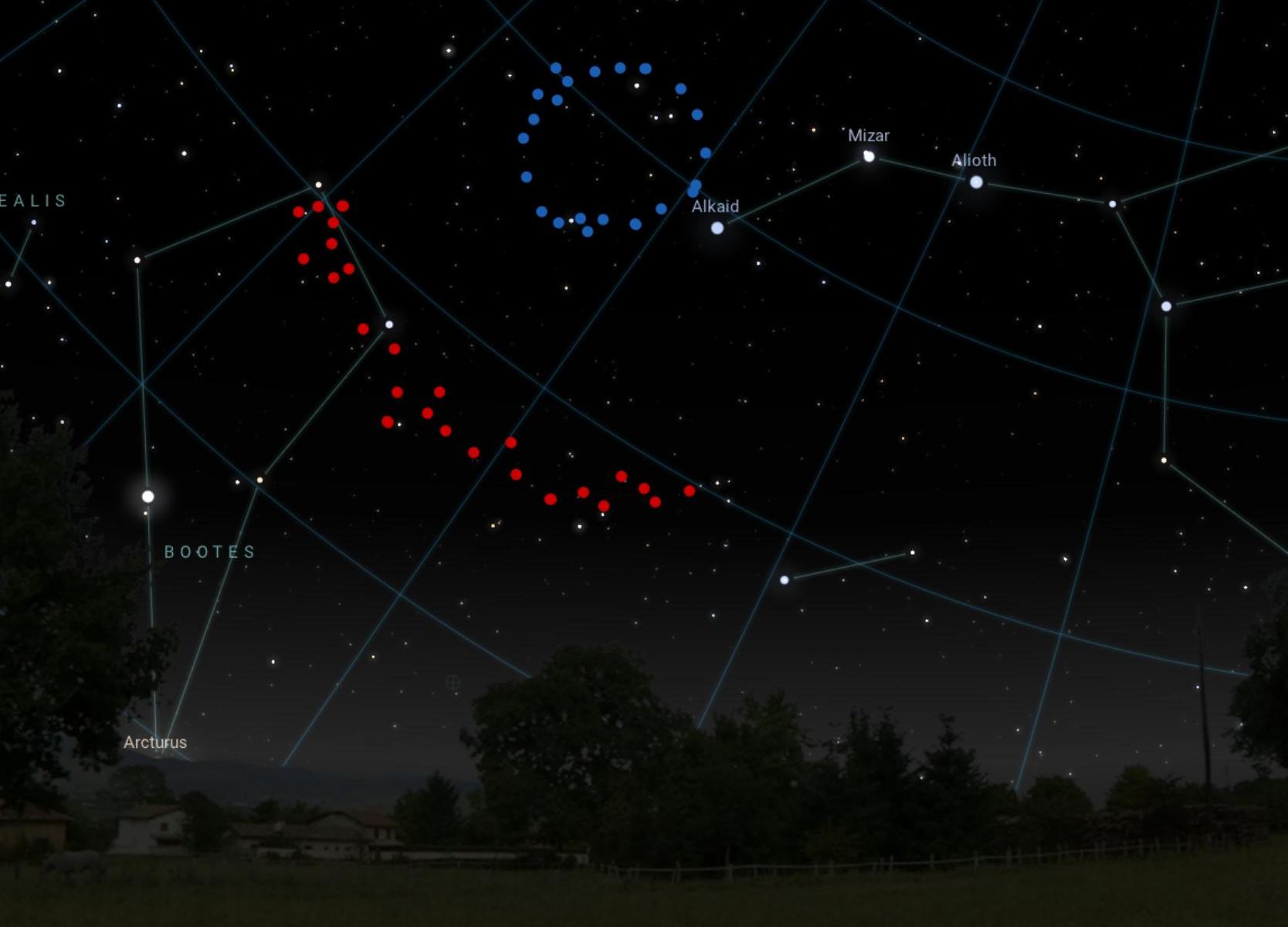The early universe, according to the Standard Model of Cosmology, ought to be a fairly homogenous place, with little structure or arrangement. In 2021, however, astronomers discovered a large pattern of galaxies forming a giant arc 3.3 billion light years across. Now, a second large-scale pattern has emerged. This time, it’s an enormous circle of galaxies, nicknamed the Big Ring. Together, the Giant Arc and the Big Ring present a challenge to the Standard Model, and may send cosmologists back to the drawing board.
“The Big Ring and Giant Arc are the same distance from us, near the constellation of Boötes the Herdsman, meaning they existed at the same cosmic time when the universe was only half of its present age. They are also in the same region of sky, at only 12 degrees apart when observing the night sky,” says Alexia Lopez, a PhD student at the University of Central Lancashire who discovered both structures alongside supervisor Roger Clowes and collaborator Gerard Williger.
“Identifying two extraordinary ultra-large structures in such close configuration raises the possibility that together they form an even more extraordinary cosmological system.”
The Big Ring and the Giant Arc are made up of galaxies that are so dim and so faint they wouldn’t normally be visible. However, distant quasars (bright point sources caused by active black holes at the hearts of galaxies) shine light through the dim galaxies, where matter absorbs some of the light.
In particular, Lopez and her colleagues were looking for evidence of dim galaxies blocking a Magnesium ion called Mg-II. They found it in data from the Sloan Digital Sky Survey, giving them both the position and distance of the otherwise invisible galaxies.
This enabled Lopez to map the galaxies in three dimensions, and doing so revealed the Giant Arc and Big Ring 9.2 billion years away.

At that point in the universe’s history, according to the Standard Model, any structure that exists shouldn’t be larger than 1.2 billion light years across. Yet both the Arc and the Ring far exceed that, and they don’t seem to be coincidental:
“We did some statistics and found that the Big Ring has a significance of 5.2 Sigma. This is exceeding that 5-Sigma golden threshold,” says Lopez, referring to the usual level of significance scientists require of themselves to confirm a discovery.
One possible explanation for large structures like these is called Baryonic Acoustic Oscillation (BAO). In the earliest moments of the universe, sound and pressure waves, shaped by gravitational interactions, could form ‘bubbles’ of matter across large scales.
BAO is allowed by the Standard Model of Cosmology. However, it tends to create spherical structures, whereas the Big Ring is two-dimensional.
So a different explanation is necessary.
At a press conference at the American Astronomical Society annual meeting on January 10, 2024, Lopez alluded to two possible alternative explanations.
The first is that the structures might be evidence for cosmic strings: one-dimensional topological defects proposed in the 1970s as part of string theory. Cosmic strings could, theoretically, have been created in the early universe and would have left their mark on the structure of matter.
The Big Ring and the Giant Arc might also be explained by an entirely different model of cosmology, such as the Conformal Cyclic Cosmology (CCC) model proposed by physicist Roger Penrose.
In this model, the universe goes through endless cycles of big bang after big bang. In CCC, there is no need for the universe to collapse back together in a Big Crunch, but rather it expands indefinitely, and all matter decays, until, mathematically, the difference between the empty expanded universe and a Big Bang singularity is just a question of scale – and when there is no matter (as at the end of the universe and at the beginning), scale is irrelevant. An expanded empty universe can become the next singularity, restarting the cycle.
Importantly, CCC would leave behind evidence of the previous cycle (what Penrose calls an Aeon) in the new Aeon. In other words, it could create structures the size of the Big Ring and the Giant Arc.
These are captivating theories. However, so far, no alternative model of the universe, not even CCC, has been able to supplant the Standard Model of Cosmology for its sheer explanatory power to describe what we observe in the universe around us. But the Standard Model does have a growing number of cracks and gaps, hinting that it might one day be improved or supplanted.
The Giant Arc and the Big Ring together represent one such crack, a place where what we know about the physics of the universe fails to explain what we observe.
It is, at the least, a reason to keep looking.
Learn More:
“A Big Cosmological Mystery,” University of Central Lancashire.
Watch the Press Conference. AAS 243, Janurary 10 2024.


The “Giant Arc” paper describes a “Mg II absorber” dataset from catalog of quasar backlit absorbing systems. Such systems are associated with star-formation regions. They are then binning the absorption light line width which is assumed to correlate with signal strength and then find a pattern that interests them. I am at a loss to understand what type of “structure” that pattern would suggest. It is also so far a spurious claim, I can’t find any other groups working on this or claiming that it is an observed “crack” of something real and unexplained.
It seems the “Big Ring” pattern is harvested from the same database. What is curious is that the redshifts appears to be the same, suggesting that extracted patterns are method dependent and sensitive to their clustering method “linkage scale” which bring them out.